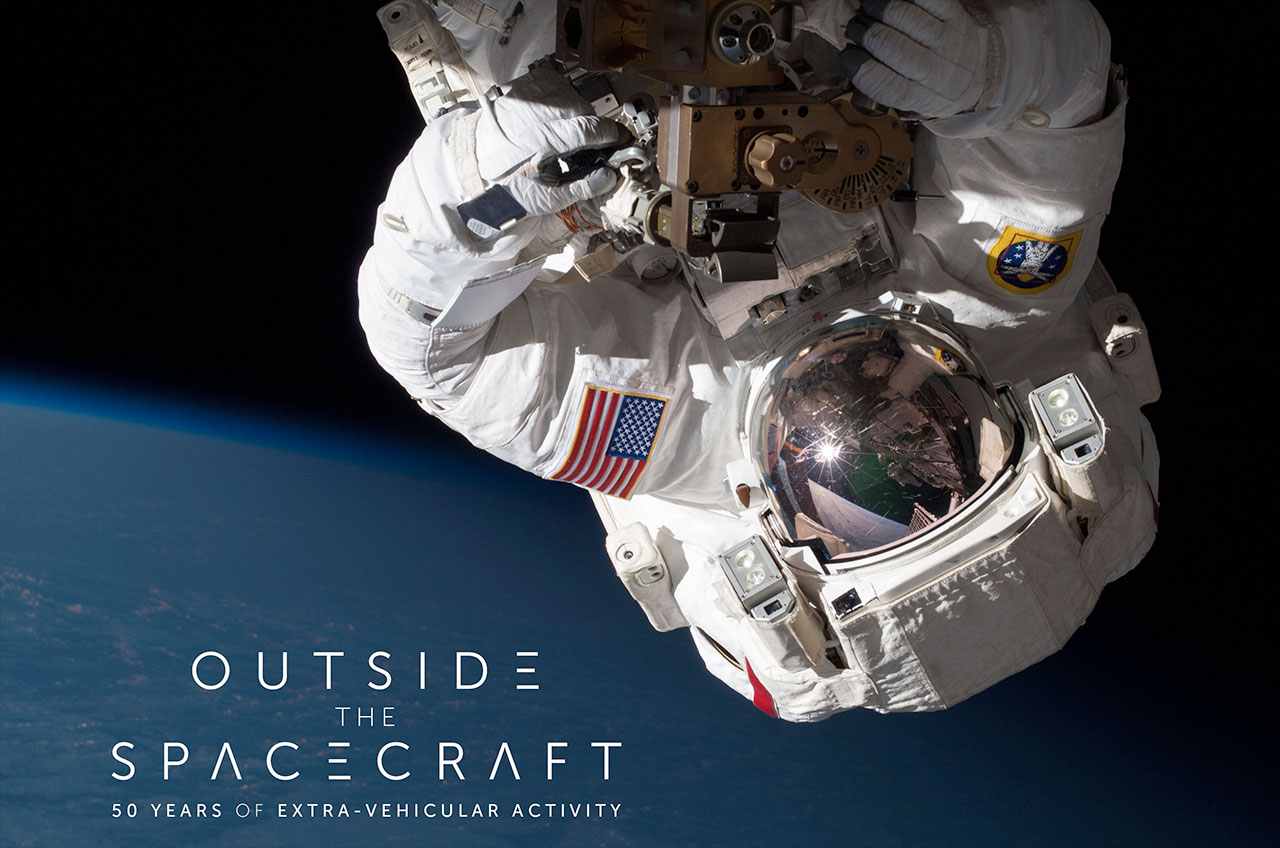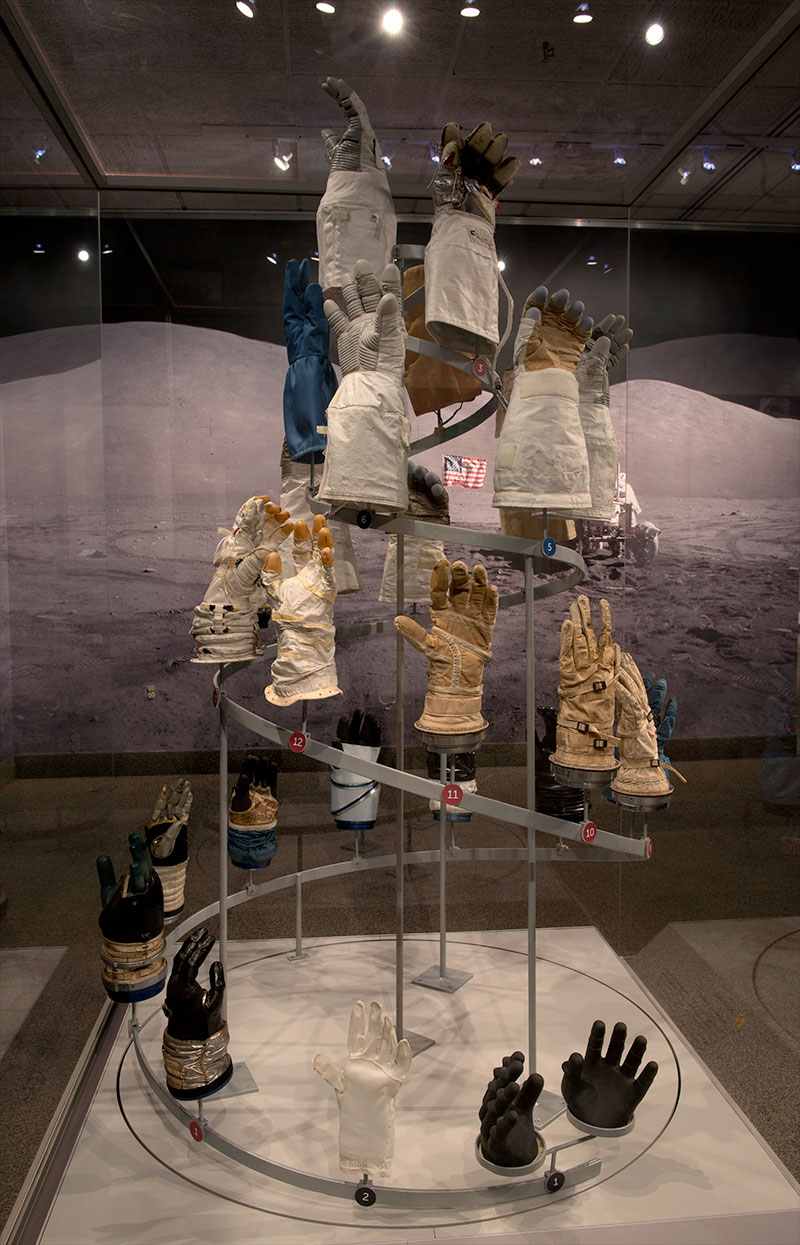Outside the Spacecraft: Smithsonian Celebrates 50 Years of Spacewalks

The Smithsonian is inviting the public to take a stroll through half a century of spacewalks.
In its new exhibition, "Outside the Spacecraft: 50 Years of Extra-Vehicular Activity," the Smithsonian's National Air and Space Museum in Washington, D.C. pays tribute to the 50th anniversary of the first two human ventures into open space. Opening today (Jan. 8), the six-month exhibit presents art, photography, artifacts and personal accounts that relate the continuing story of extravehicular activity or EVA — or as it is colloquially known, spacewalking.
"'Outside the Spacecraft' is the museum's opportunity to celebrate 50 years of people doing the most amazing thing I can think of and that is learning how to live and work in space using their own 'personal spacecraft' and special tools," Jennifer Levasseur, the curator of the exhibit, told collectSPACE.com. "Our collection is so strong in EVA-related items that this is the perfect opportunity for us to show people some unique objects and connect them to things like art, photography, and the work we do to preserve EVA history." [Evolution of the Spacesuit in Photos]
EVA changed the nature of human spaceflight. Whereas rockets could get humans into space, the ability for them to leave their spacecraft and work outside made possible walking on the moon, repairing and upgrading the Hubble Space Telescope, and assembling the International Space Station.
"As an achievement within the history of spaceflight, EVA is crucial to a long-term ability to reside in space," said Levasseur. "We needed the capability in order to build and maintain space equipment, as we continue to see on the space station."
First spacewalks 50 years ago
The first spacewalk was performed by Russian cosmonaut Alexei Leonov on March 18, 1965. His 12-minute, historic feat was followed three months later by NASA astronaut Edward White, who spent over 20 minutes in open space on June 3 of that same year.
Finding artifacts to represent White's walk in space was not difficult, explained Levasseur. The museum already had most of the equipment he used that day, including the spacesuit that he wore and the camera that he carried (the National Air and Space Museum also displays the Gemini 4 spacecraft from which White exited). [Giant Leaps: Biggest Moments in Human Spaceflight]
Get the Space.com Newsletter
Breaking space news, the latest updates on rocket launches, skywatching events and more!
Representing Leonov however presented a challenge. The museum displays the cosmonaut's training spacesuit and airlock, but in another of its galleries. His flown spacesuit, Voskhod 2 spacecraft and equipment are all on exhibit in Russia.
"We have to tell the stories of Leonov and White, which is more difficult as a [U.S.] national museum in the case of Leonov," Levasseur explained. "In his case, we could tell a different aspect of his story with the military uniform he donated to us."
The curators were also able to encompass both historic outings through the imagery they generated.
"The visuals of those [spacewalks], moving and still, are included to really show people what it looked like those first times," Levasseur described. "And we can bring that full circle by including some very recent photographs of ISS EVAs at the end [of the exhibit]."
Over the Earth and on the moon
"Outside the Spacecraft" spans the history of spacewalks, from Leonov's and White's first EVAs 50 years ago to the 369th spacewalk made last June by a pair of cosmonauts outside the International Space Station. In the half century since the initial outings, more than 200 people have "gone EVA" on nearly 375 excursions.

Twelve of those people exited their spacecraft to walk on the surface of the moon.
"Special [as part of the exhibit] are the Apollo 11 objects," Levasseur told collectSPACE, referring to the first mission to land men on the moon. "[Neil] Armstrong's headset, the lunar module film camera that recorded the first landing, and a waist tether used in the LM as well — the last two of which are on loan to us, and are promised donations, from the Armstrong family."
Other rare, and rarely-seen, EVA artifacts included in the exhibition include spacewalker Eugene Cernan's Gemini 9 pressure suit, which is now so fragile that it is uncommon for it be to be displayed, and the cover to Cernan's oxygen purge system (OPS) that he used in December 1972 when he became the last man to walk on the moon.
"Of our 'never before seen on display' objects, I would say that Cernan's OPS cover from Apollo 17 is fantastic since we opened its NASA packaging just for this exhibit," said Levasseur.
Also on display is an Omega Speedmaster chronograph that has been taken apart to reveal its internal workings. Omega, as a sponsor of the exhibit, prepared this special cross-section presentation, which is displayed beside the wristwatch that Apollo 17 astronaut Harrison Schmitt used on the lunar surface.
Putting ourselves in their shoes
"With a small temporary exhibit, in this particular exhibit space, we can highlight objects we do not normally get to showcase because of their fragility, and give people an intimate experience," Levasseur stated. "It is also a place where people can feel immersed in EVA because of our use of photography from EVAs, which are really our best way to connect with the astronauts and feel like we could put ourselves in their shoes."
"Outside the Spacecraft" will be open at the National Air and Space Museum through June 8, 2015. The exhibition is accompanied by an online display designed to be used on mobile devices as visitors tour the gallery.
The museum is also inviting people to join the tradition of spacewalk-inspired art and create their own artwork based upon photographs of EVA. Selected works will be featured on the "Imagining Spacewalks" project Tumblr page.
"Since [spacewalkers] are carrying all the necessities of life and work with them, it all feels far more personal than what you might think about with a broad look at human spaceflight," Levasseur said.
Click through to collectSPACE to watch a behind the scenes video of the Smtihsonian’s new "Outside the Spacecraft" exhibit.
Follow collectSPACE.com on Facebook and on Twitter at @collectSPACE. Copyright 2015 collectSPACE.com. All rights reserved.
Join our Space Forums to keep talking space on the latest missions, night sky and more! And if you have a news tip, correction or comment, let us know at: community@space.com.

Robert Pearlman is a space historian, journalist and the founder and editor of collectSPACE.com, a daily news publication and community devoted to space history with a particular focus on how and where space exploration intersects with pop culture. Pearlman is also a contributing writer for Space.com and co-author of "Space Stations: The Art, Science, and Reality of Working in Space” published by Smithsonian Books in 2018.In 2009, he was inducted into the U.S. Space Camp Hall of Fame in Huntsville, Alabama. In 2021, he was honored by the American Astronautical Society with the Ordway Award for Sustained Excellence in Spaceflight History. In 2023, the National Space Club Florida Committee recognized Pearlman with the Kolcum News and Communications Award for excellence in telling the space story along the Space Coast and throughout the world.










